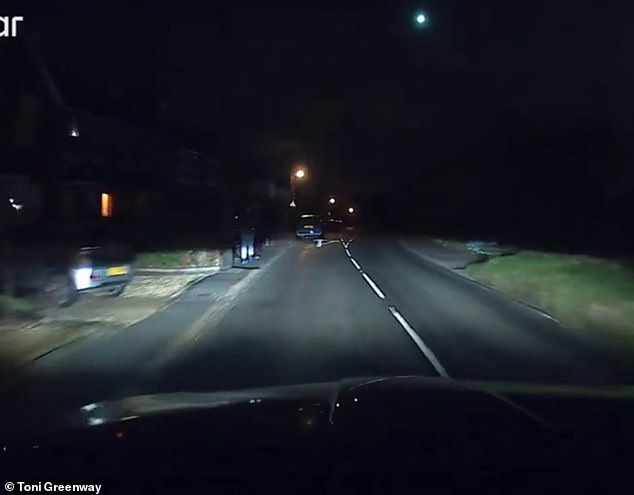Brits have been left in awe after spotting what is believed to be a ‘meteor’ glowing through the night sky.
Lucky stargazers in Northfields and Ealing, west London, have reported seeing a blue-ish green blob race through the city’s sky on Tuesday.
One onlooker described seeing the ‘streak’ of light dash through the clouds at around 8.10pm to 8.30pm, and initially believed it was fireworks.
‘I’m used to seeing planes coming and going to Heathrow, and also helicopters coming and going; this was not that,’ they wrote on Reddit.
‘My next thought was fireworks but I’m 90% sure it wasn’t that, and there was no explosion.
‘For reference it was about the same size as the full-ish moon tonight, visible through the clouds, but as a much brighter blue-green color and, again, moving quite fast.
‘It was a very odd combination of speed, size and brightness and didn’t look like anything I’ve ever seen in the sky here before.’
Others claimed to have seen the unusual sighting from Wimbledon and Hampstead Heath, with some even catching a glimpse as far afield as Brighton and Grantham.

Lucky stargazers in Northfields and West Ealing, west London, and further afield, have reported seeing a blue-ish green blob race through the city’s sky on Tuesday night
It has not yet been confirmed what the colourful ‘streak’ in Tuesday’s sky was, however, the Daily Mail has approached the Met Office for comment.
It comes as earlier this week Jessica Lee, an astronomer at the Royal Observatory Greenwich also said sky gazers could expect the Draconid meteor shower today.
But, the meteor shower, which is expected to peak Wednesday night may be difficult to see due to the moonlight, Ms Lee warned.
‘The Draconids meteor shower is named after the constellation of Draco the dragon,’ Ms Lee said.
‘This is because, although meteors appear all over the sky, they all appear to emerge or radiate from a single point that lies within this constellation.
‘The meteor shower is visible from the 6th until the 10th of October this year.
‘The best time will be from around 8pm on the 8th of October.
‘At this time, that radiant point within Draco will be in the north-west of the sky, slowly getting lower in the sky until sunrise.
‘The moon will be almost full on this night, however, so it could make the meteors tricky to see.’
The Draconids are caused when debris from the comet 21P/Giacobini-Zinner burns up in the Earth’s atmosphere, Ms Lee added.
‘Most of this debris will burn up at a height of around 80km above the ground, so this is not a dangerous event,’ she said.
‘For the best chances to spot them, find a dark area of clear sky and allow around 20 minutes to let your eyes adapt to the dark.
‘It may also be advisable to lie down as you may be looking up for a long time.’
In September, walkers were urged to keep an eye out for meteorite fragments scattered over Scotland after a shooting star was spotted in the early hours of July 3.
The meteor is believed to have exploded over northern Scotland, with the ‘fall zone’ straddling Loch Treig in Lochaber, Highland.
The aerial event was captured on some cameras and shared on social media, showing a big yellow spark soaring through the dark sky.
Members of the public have since been tasked to look for the fragments, which should appear ‘black, glassy and shiny’.
Meteorites – rocks from outer space and have fallen to the surface of a planet – may have delivered essential compounds facilitating the evolution of life as we know it.
Professor Luke Daly, a planetary geoscientist and space rock hunter at the University of Glasgow, called them ‘time capsules of the early solar system’.
‘They hold a wealth of information about how our solar system formed and developed,’ he said.
‘This is a very exciting opportunity to learn more about where this rock came from and where it has been and fill in a bit more of the jigsaw of our solar system’s history.’